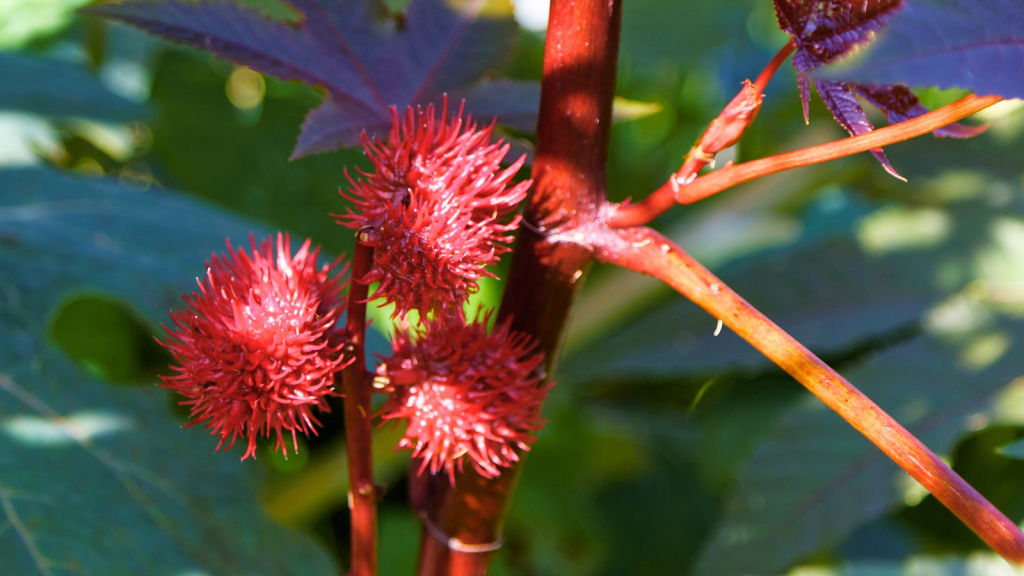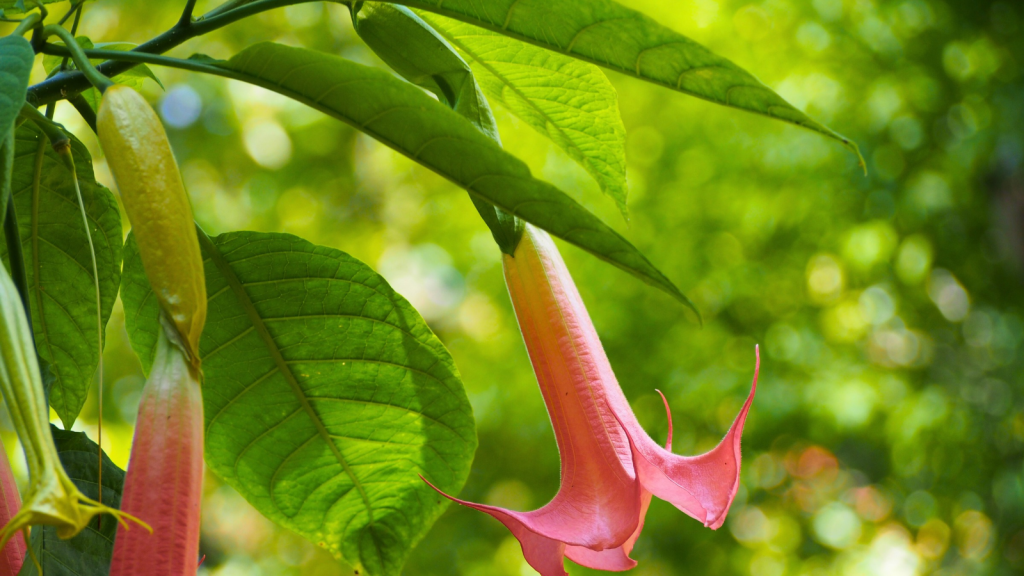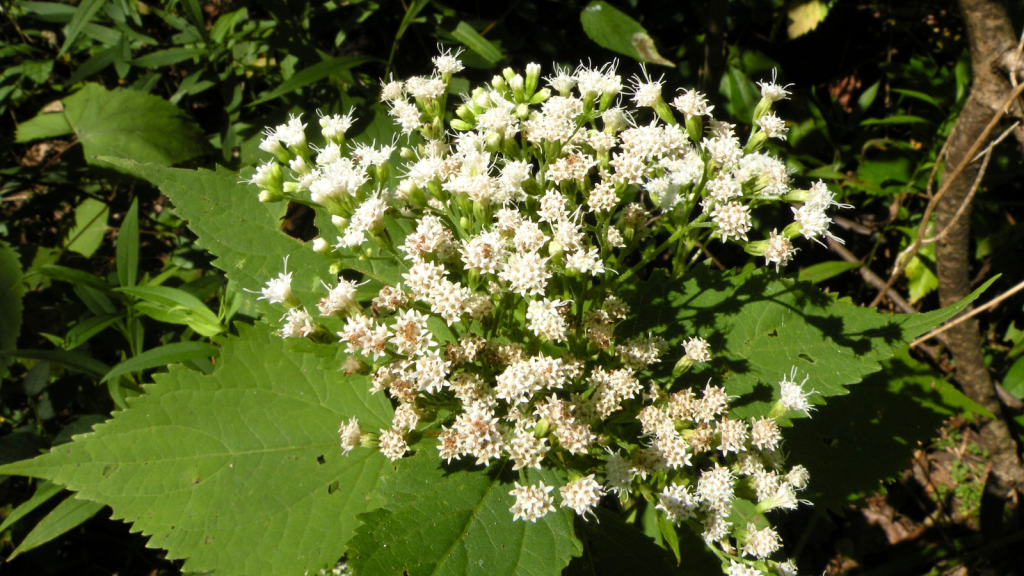Forget about lions, sharks, and venomous snakes. Some of the world’s deadliest organisms don’t have teeth, claws, or even move. Hidden in plain sight, certain plants and fungi pack a lethal punch that can rival or surpass the most dangerous animals. From ancient forests to your own back garden, these silent killers have evolved ingenious ways to defend themselves or simply exist, often with devastating consequences for unsuspecting creatures – including humans. Let’s explore 18 of these toxic terrors that prove nature’s most potent poisons don’t always come in scales or fur.
Death Cap Mushroom

The innocent-looking death cap mushroom is responsible for more human deaths than any other fungi. Found in woodlands across Europe and North America, it contains a toxin that destroys the liver and kidneys. Just half a cap can be fatal, and symptoms often don’t appear until it’s too late for treatment. The death cap is particularly dangerous because it closely resembles several edible mushroom species, leading to frequent misidentification by foragers.
Manchineel Tree

Known as the ‘death apple’ tree, the manchineel is so toxic that standing under it during rain can cause blistering. Its sap can cause blindness, and eating its fruit can be fatal. Native to the Caribbean and Gulf of Mexico, even its smoke is dangerous when the wood is burned. Indigenous peoples have historically used the sap of the manchineel to poison their arrows for hunting and warfare.
Castor Bean Plant

The castor bean plant produces ricin, one of the most potent natural poisons known. A single milligram of ricin can kill an adult human. Despite its toxicity, the plant is widely cultivated for castor oil production, with careful processing removing the deadly compound. Ricin has gained notoriety as a potential bioterrorism agent due to its extreme toxicity and relative ease of production.
Angel’s Trumpet

These beautiful, trumpet-shaped flowers hide a sinister secret. All parts of the angel’s trumpet plant contain dangerous levels of tropane alkaloids. Ingestion can cause hallucinations, paralysis, and death, earning it the nickname ‘devil’s breath’ in its native South America. Despite its dangers, the plant is sometimes used recreationally for its hallucinogenic properties, often with disastrous consequences.
Deadly Nightshade

Also known as belladonna, this plant has a long history in medicine, cosmetics, and poison. Its berries are sweet and tempting, but eating just a few can be lethal. It contains atropine, which causes hallucinations, delirium, and eventually, heart failure. Historically, women used belladonna drops to dilate their pupils, which was considered attractive – hence the name ‘bella donna’, meaning ‘beautiful woman’ in Italian.
White Snakeroot

This unassuming North American plant was responsible for thousands of deaths in the 19th century. It contains tremetol, which can pass through milk when cows graze on it. This led to ‘milk sickness’, which famously claimed the life of Abraham Lincoln’s mother. The discovery of white snakeroot as the cause of milk sickness was a significant breakthrough in American medical history and helped put an end to the mysterious epidemic.
Water Hemlock

Often called ‘the most violently toxic plant in North America’, water hemlock resembles many edible plants in the carrot family. Its toxin, cicutoxin, causes seizures and death within hours of ingestion. Even a small amount can be fatal to humans and livestock. Water hemlock is particularly dangerous because its roots, which contain the highest concentration of toxin, can be mistaken for edible wild parsnips or artichokes.
Gympie Gympie Tree

This Australian tree is covered in stinging hairs that deliver a potent neurotoxin. The pain from its sting has been described as feeling like being burned with hot acid and electrocuted at the same time. The agony can last for months and has driven some victims to suicide. Remarkably, some native Australian rainforest animals have evolved to eat the leaves of the gympie gympie tree without ill effects.
Oleander

A common ornamental shrub, every part of the oleander is extremely toxic. Ingesting even a small amount can cause irregular heartbeat, vomiting, and death. Its sap can cause skin irritation and blindness if it gets in the eyes. Oleander is so toxic that there have been cases of people becoming ill after eating honey made by bees that visited oleander flowers.
Rosary Pea

The bright red seeds of the rosary pea contain abrin, a toxin similar to ricin but even more potent. A single seed, if chewed, can kill an adult. Despite this, the seeds are often used in jewellery making, posing a risk to artisans and wearers alike. The plant’s ability to fix nitrogen makes it valuable in some agricultural settings, despite its extreme toxicity.
Amanita Ocreata

Known as the ‘destroying angel’, this pure white mushroom contains the same toxins as the death cap. Found in North America, it’s responsible for numerous accidental poisonings. Its toxins can cause liver and kidney failure within days of ingestion. The destroying angel is particularly insidious because symptoms may not appear until 6-24 hours after ingestion, by which time the toxin has already been absorbed.
Jimsonweed

Also called devil’s snare, this plant has been used for centuries in traditional medicine and rituals. However, its potent mixture of toxins can cause vivid hallucinations, hyperthermia, and death. All parts of the plant are poisonous, especially the seeds. Jimsonweed got its name from Jamestown, Virginia, where British soldiers were poisoned by the plant while attempting to suppress Bacon’s Rebellion in 1676.
Monkshood

Also known as wolfsbane, this plant was traditionally used to poison wolves. Its toxin, aconitine, can cause heart and respiratory failure even through skin contact. Despite its danger, it’s still grown in many gardens for its beautiful blue flowers. In some parts of Asia, the roots of certain monkshood species are carefully processed to create traditional medicines.
Giant Hogweed

This invasive plant can cause severe burns and blindness. Its sap contains chemicals that make skin extremely sensitive to sunlight. Exposure can result in painful blisters that can leave permanent scars. It’s a growing problem in the UK and North America. Giant hogweed can grow up to 5 metres tall, with leaves up to 1.5 metres wide, making it a formidable presence in any environment it invades.
Deadly Webcap

This small brown mushroom is one of the most poisonous fungi in Europe. Its toxins can cause kidney failure days or even weeks after ingestion. What makes it particularly dangerous is its resemblance to several edible mushroom species. The deadly webcap contains orellanine, a toxin that can remain active even in dried mushrooms for years.
Stinging Tree

Australia’s stinging tree delivers one of the most painful stings in the plant kingdom. Its leaves are covered in tiny silica hairs that inject a potent neurotoxin. The pain can last for months and is so severe that it has incapacitated horses and driven humans mad. Recent research has identified a new class of neurotoxin in the stinging tree, which could potentially lead to new pain treatments.
Autumn Crocus

Despite its beauty, the autumn crocus contains colchicine, a toxic alkaloid. All parts of the plant are poisonous, with the highest concentration in the bulbs. Ingestion can cause multi-organ failure and death, with symptoms sometimes delayed for days. Paradoxically, colchicine is also used medicinally in controlled doses to treat gout and other inflammatory conditions.
Poison Hemlock

Famously used to execute Socrates, poison hemlock contains several toxic alkaloids. Ingesting any part of the plant can cause respiratory failure and death. It’s particularly dangerous because it closely resembles several edible plants like wild carrots or parsnips. Poison hemlock is often found in urban areas and along roadsides, increasing the risk of accidental exposure.
Meet the Wolf Spider | One of Britain’s Biggest Spiders

Wolf spiders are a remarkable group of arachnids found across the UK and around the world. These agile hunters get their name from their wolf-like hunting style, actively chasing down prey rather than spinning webs. With their large eyes and hairy bodies, wolf spiders might look intimidating, but they’re actually quite beneficial to gardens and homes. These spiders help control pest populations and are generally harmless to humans. From their unique parenting techniques to their impressive hunting skills, wolf spiders are full of surprises.
Read More: Meet the Wolf Spider | One of Britain’s Biggest Spiders
Becky is a fervent wildlife enthusiast and pet care expert with a diploma in canine nutrition. Her love for animals stretches beyond the domestic, embracing the wild tapestry of global fauna. With over a decade of experience in animal welfare, Becky lends her expertise to OutlandishOwl through insightful articles, captivating wildlife information, and invaluable guidance on pet nutrition. Her work embodies a deep commitment to understanding the intricate lives of animals and a passion for educating others on sustaining natural habitats. Becky's hands-on conservation efforts and her knack for translating complex dietary science into practical pet feeding tips make her an indispensable voice for creatures great and small.




